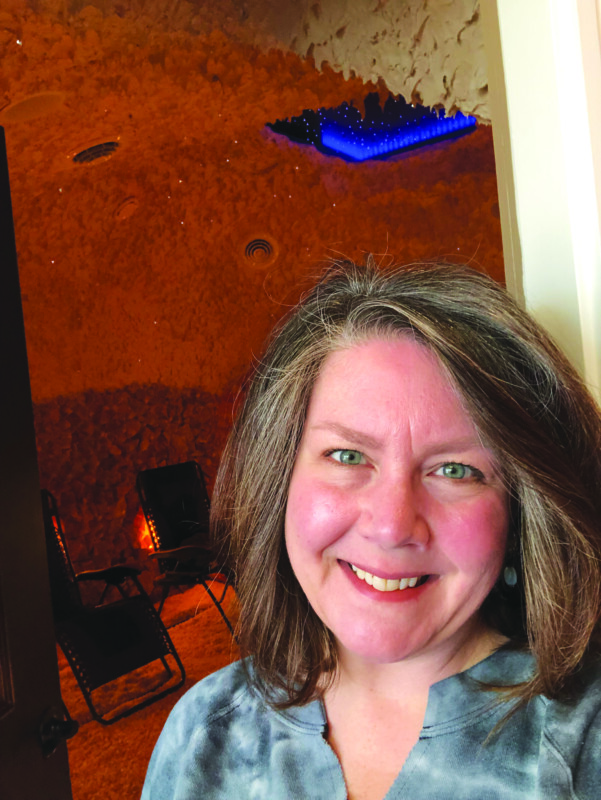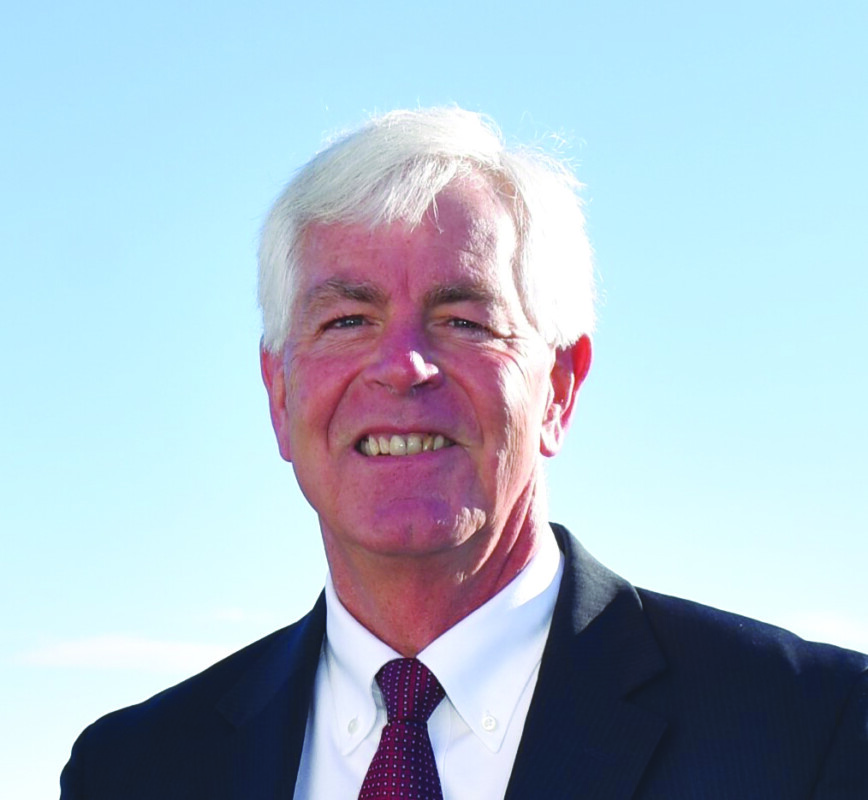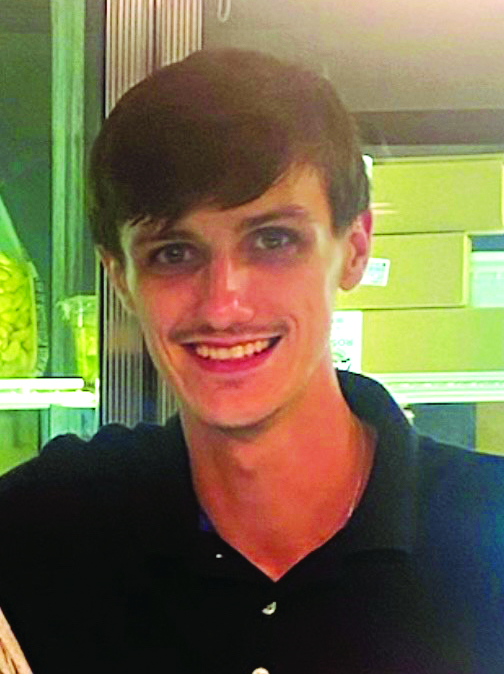Halotherapy provider and wellness entrepreneur
Deb SanSoucie is the owner of The Copper Cave, a halotherapy salt cave and wellness sanctuary in Plaistow.
Explain your job and what it entails.
I’m the owner of The Copper Cave, which is a wellness sanctuary featuring an authentic, traditional style Himalayan salt cave, which is used for halotherapy, also known as dry salt therapy. Halotherapy is the process of grinding up pharmaceutical-grade salt with a machine called a halogenerator. The micronized particles of salt are then blown out into the cave in a fine dust. When breathed in, these particles of salt can be therapeutic to your respiratory system, sinuses and skin. The business also has a small shop that includes feel-good wellness products like teas, heat packs, herbal tinctures, handmade bath products and candles, along with some other handcrafted products from local crafters. I also own Rustic Lane Soap and Candle, so many of the bath and candle products in the shop are handmade by me as well.
How long have you had this job?
We opened on Nov. 19, 2022.
What led you to this career field and your current job?
I left the legal field to open this business. I’ve always had a penchant for encouraging people to focus on their self-care and well-being. I attended craft fairs and vendor fairs with my soap business for years and loved the interaction with customers and enjoyed helping people find things that made them feel good. After years in the corporate world, I was ready to live a life filled with more purpose and enjoyed helping people feel better about themselves, whether that be related to their mind or body. I loved that the experience in the salt cave could give people both a boost in their health and also a break from the outside world where their mind could rest.
What kind of education or training did you need?
I joined the Salt Therapy Association and attended seminars to gain knowledge about the benefits of halotherapy.
What is your typical at-work uniform or attire?
My typical attire is comfortable and warm. I tell people who are visiting the cave to dress that way as well since the cave is kept at a cool temperature.
What is the most challenging thing about your work, and how do you deal with it?
The biggest challenge in owning a new business is getting the word out that we’re here. Social media has been a giant boost so far.
What do you wish you’d known at the beginning of your career?
Something I’m learning is that you need patience in growing a new business. One slow day or even a slow week isn’t a failure. Business has ups and downs, and it all evens out in the end. We’re seeing steady progress in growth, but sometimes I have to step back from it to realize it.
What do you wish other people knew about your job?
I want people to know that I genuinely care about their well-being. I hope they leave their experience feeling relaxed or rejuvenated — whatever they need at the moment. I want people to feel as if they’ve stepped into a sanctuary, where they feel safe to take care of their own needs.
What was the first job you ever had?
My first job was at a Hallmark store.
What’s the best piece of work-related advice you’ve ever received?
If you’re successful doing something you don’t love, imagine what you could accomplish doing something you’re passionate about.
Five favorites
Favorite book: Anything by Joe Dispenza
Favorite movie: The Notebook
Favorite music: Alternative rock or meditation music, depending on what I’m doing.
Favorite food: A good burger and fries
Favorite thing about NH: Camping
Featured photo: Deb SanSoucie. Courtesy photo.






